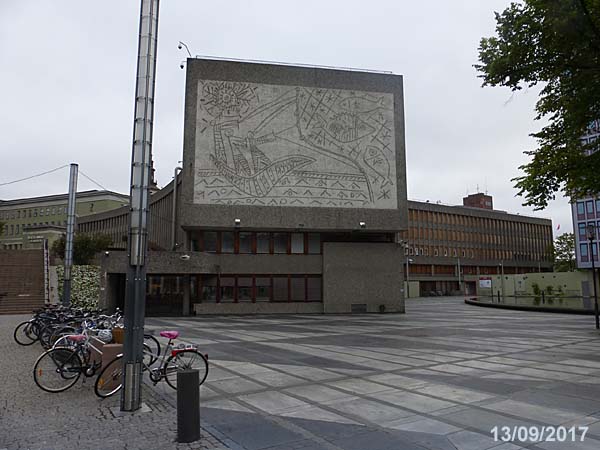In 1969 Erling
Viksjo completed the construction of the Y
Building as a companion to his modernist High
Rise block in the government quarter of Oslo's
city centre.
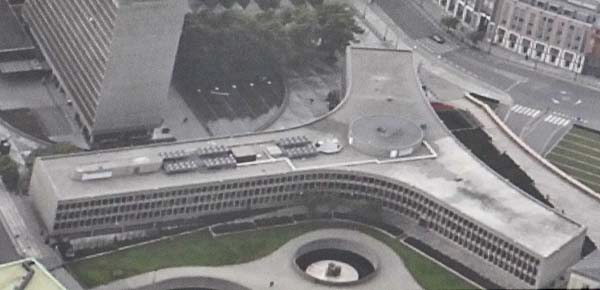
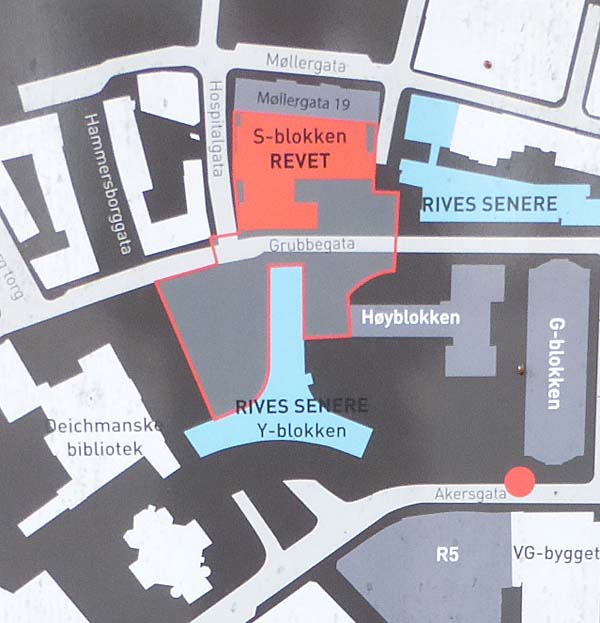
Along with its neighbour, the Y-Blokka was
home to government departments until July
22nd, 2011 when a far-right militant racist,
Anders Behring Breivik, placed a car bomb near
the buildings killing eight people and
injuring 209.
On the Akersdgata side of the building is a
bus shelter. On the fateful day it stood
outside the office of the newspaper VGs at
Akersgata 55. It jas become a memorial
for the events of thast day as you can read
and see below.



The www.roomofpossibilities.com website
reflects on the importance of the Y-Blokka by
explaining that, "... The architectural
and artistic merit of the Y-block, as well
as its historical significance, is
uncontested. Architect Erling Viksjø
conceived the monumental high-rise H-block
and the lower Y-block as whole. The
high-rise was erected in 1958 with
pioneering treatment of the exposed
concrete and integrated works by modernist
artists, including sensational
contributions by Pablo Picasso. In 1969
the overall picture was completed with the
sculptural Y-block. Its three curved wings
delimit three urban spaces of individual
character. Picasso’s “Fishermen” facing
Akersgata is an epitome of public art."
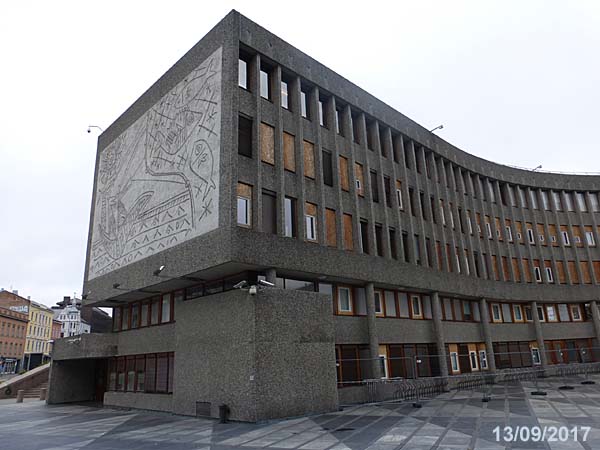
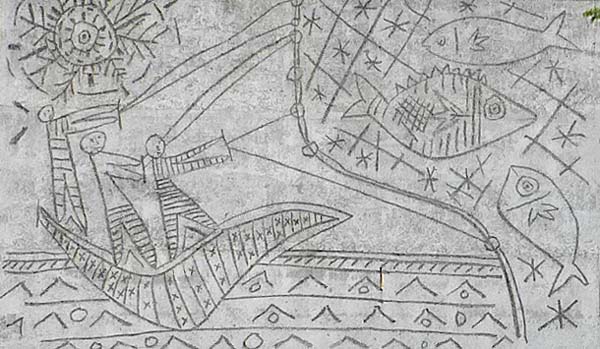
The 20th Century Society add that, "....
The artistic value of Viksjø’s two
government buildings is immeasurable,
especially because of Picasso’s five
murals, two of which belong to The
Y-block. “The Fishermen” is on the façade,
facing the busy street Akersgata, and “The
Seagull” is in the lobby. The buildings
are also pioneering works when it comes to
the use of concrete. In 1955, after
several years of experimentation, Viksjø
and the engineer Sverre Jystad patented
“naturbetong”, a type of concrete with
embedded river gravel. The surface is
sandblasted to reveal the stones, and can
also create decorative patterns. The
artist Carl Nesjar worked with Viksjø to
develop this as a new method of making
integral art. The decorations are not
added onto the building, but rather
engraved into its very structure.
.....Viksjø’s concept of a high-rise
combined with a low volume was developed
over many years, and he conceived The
Y-block’s curved shape in the late
fifties. Viksjø was inspired by several of
Le Corbusier’s buildings. The combination
of a highrise and a lower volume is also
reminiscent of the UN-building in New York
(1952), designed by Oscar Niemeyer."

However, today the Y-Blokka is at
the centre of a controversy about its
future. In 2015 the Norwegian government
decided to demolish the Y-Blokka a view at
odds with those who regard it as having both
architectural and historic value.
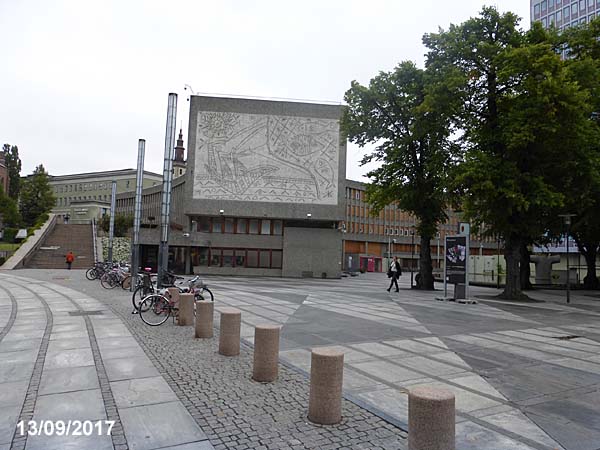
As you can see, when I
visited in September of 2017, much of the
building was boarded up.

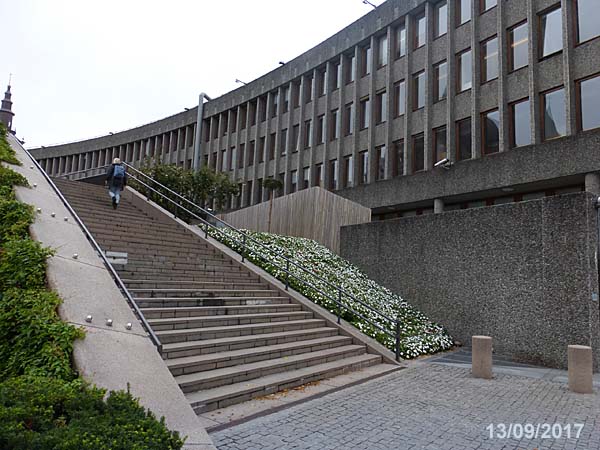
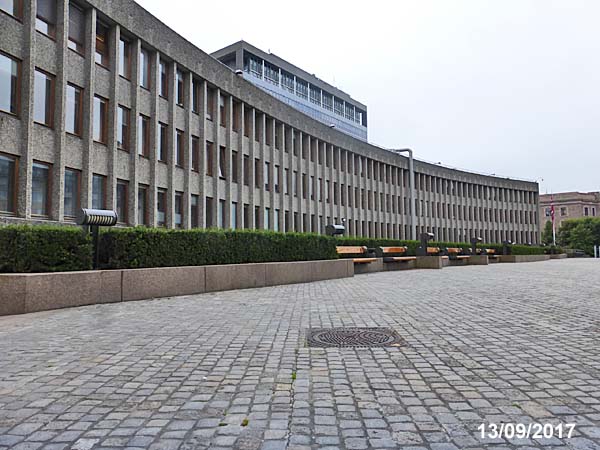
|
